In 1974, Robert Morris, a figure of minimal art and post-minimalism, enjoyed an exhibition at Saint-Étienne, two years after his stunning retrospective at the Tate Gallery in London. On that occasion, he created Untitled (Felt Piece) in the rooms of the Musée d'Art et d'Industrie.
This artwork illustrates the artist’s privileged connection with our city. This is why it was placed in the capable hands of textile restorer Sylvie Forestier, in order to showcase this particular work.
WHEN FELT BECOMES AN ARTWORK
At first glance, Untitled (Felt Piece) may appear rudimentary and artisanal. After all, is it not simply a long strip of felt, spanning nearly 10 metres and attached to the wall by two wooden struts? Yet this artwork relates to a long tradition of art and form. Except that here, Robert Morris gives the material pride of place.
During the 1960–1970s, he produced a series of artworks made out of felt. He cut out and/or meticulously folded large, thick sheets of industrial felt. Once suspended on the wall, they assume diverse geometric forms through the effect of their own weight, allowing the original form to appear. Morris particularly appreciated felt as a material since it is supple, hence subject to gravity. He called this principle ‘anti-form’.
The artist allowed the felt to determine the form through simple gestures: hanging, folding, or allowing to fall. So these malleable felt pieces become sculptural through the artist’s hand.
WHEN FELT BECOMES AN ARTWORK
Unfortunately, an artwork that relies on gravity eventually ‘tires’ due to its own weight.
Like a sick patient, Untitled (Felt Piece) had to be seriously examined by a restorer. It was spread out on the floor, in a difficult operation to organise, owing to its imposing dimensions. One of the exhibition rooms was commandeered for the occasion.
The restorer leans over the artwork to reveal all of the alterations and take the measurements.
Even from afar, significant deformations can be observed. Note how the felt undulates across the full length of the upper part of the wooden strut. That’s not ideal!
Uh-oh… Up close, it’s even worse!
The observation is clear and irrevocable. Over time, the felt has distended and holes formed at the level of the clamps holding the felt onto the wooden rods. Without an intervention, Untitled (Felt Piece) would soon no longer be in a fit state for exhibition. Fortunately, the restorer is not short on ideas.
WHEN THE GOING GETS TOUGH, THE TOUGH GET GOING…
First phase: withdraw the wooden struts. Before tackling this task, the positioning of the rods was carefully marked with the aid of a white thread, tracing their silhouette. The staples were then removed one by one.
The most damaged areas will be consolidated by pieces of silk. We must confess: the choice of colour for the silk and thread was a real challenge! Because while the felt appears brown when seen from afar, it is in fact made up of multicoloured strands!
In the end, we opted for a brown hue with a hint of green. Placed on the back of the felt, it goes unseen!
PAINSTAKING WORK!
A long, patient task begins to treat the felt. The restorer reduced the deformations thanks to pins and by placing the felt beneath glass panels, using small weights as ballast.
The silk used to double up the damaged areas of the felt were dyed in the workshop by the restorer. Pieces were cut out and hemmed to follow the contours of the felt. They were then arranged using pins.
The patient sewing work can finally begin, using a curved needle.
The restoration is nearly complete, all that’s left to do now is put the wooden struts back up above the felt.
SHOW TIME!
Untitled (Felt Piece) has recovered all of its splendour! Here it is showcased during the Luxembourg phase of the Robert Morris: The Perceiving Body exhibition.
Discover Untitled (Felt Piece) at the MAMC+ from 1 July to 1 November 2020 at the Robert Morris: The Perceiving Body exhibition.

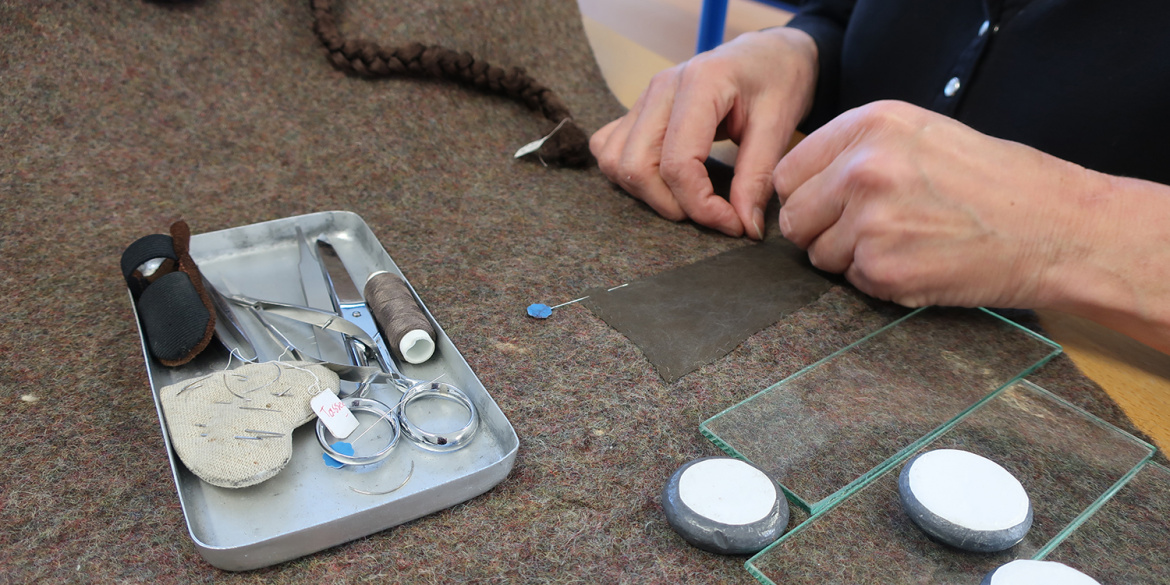
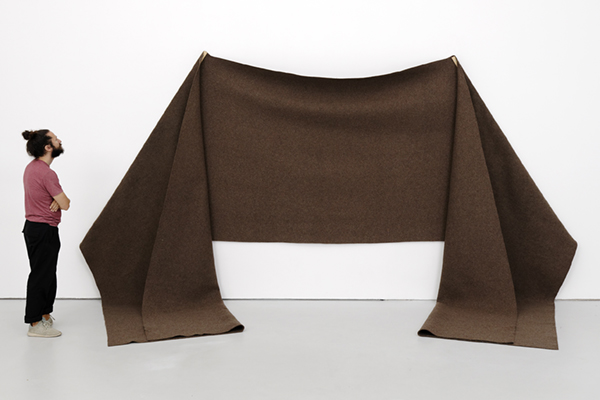
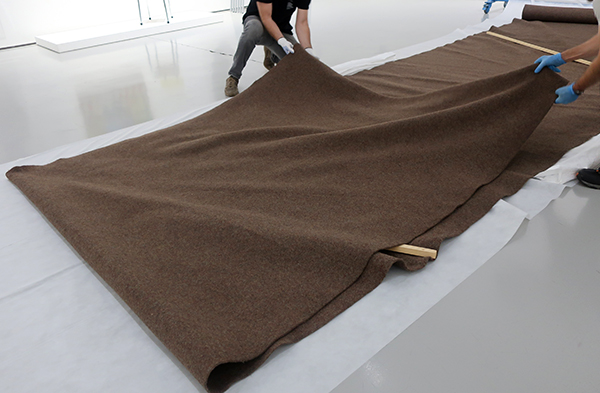
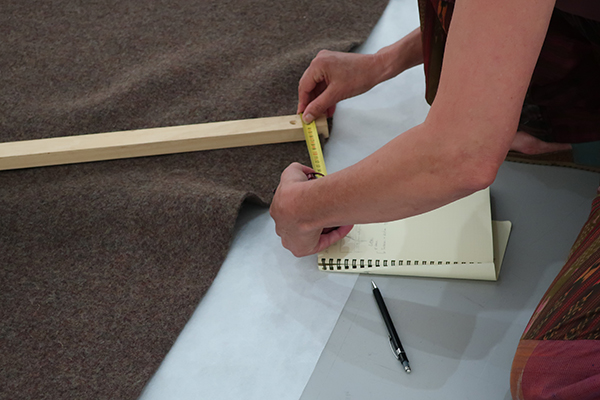
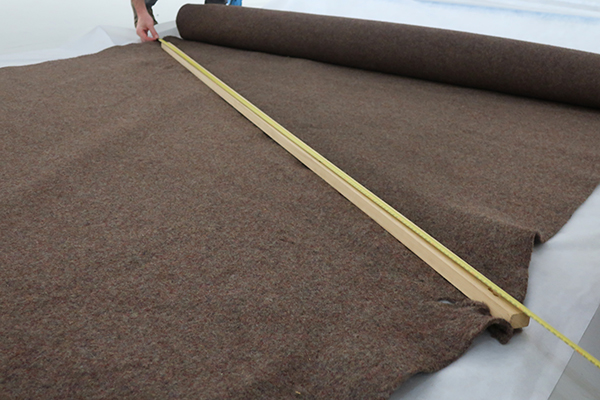
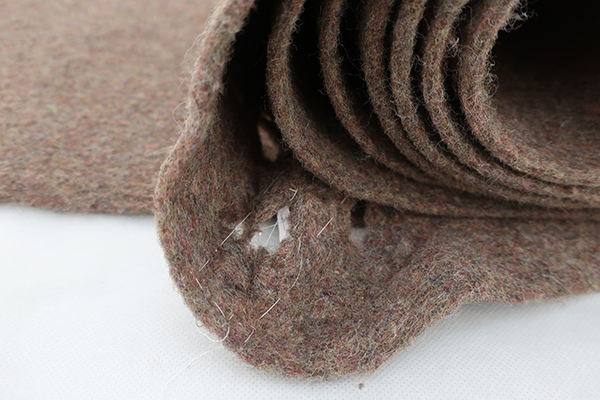
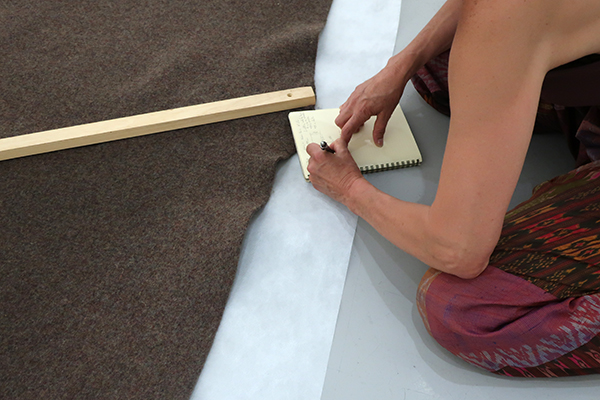
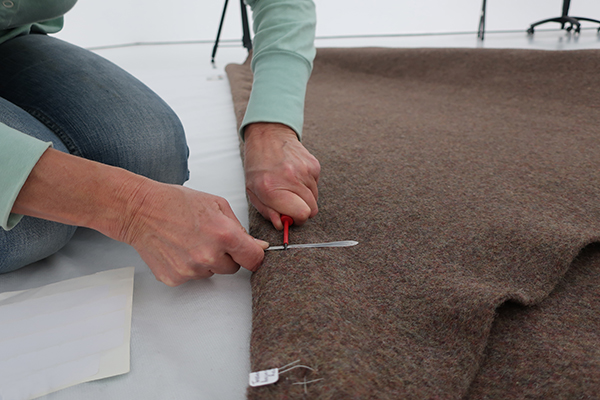
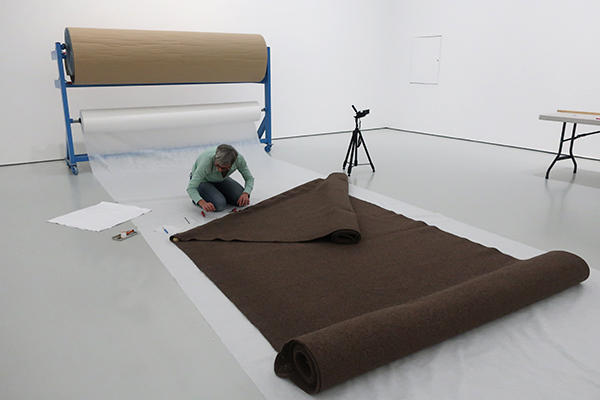
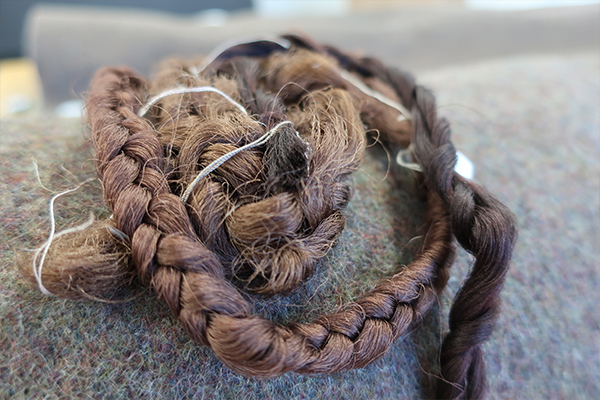
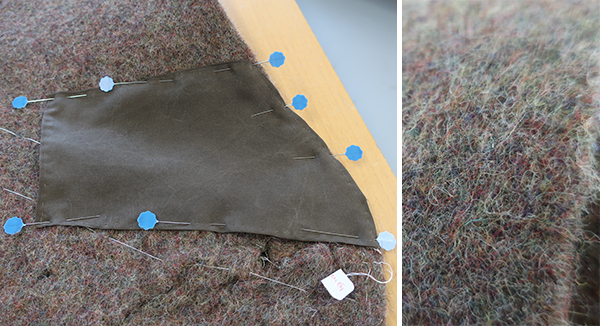
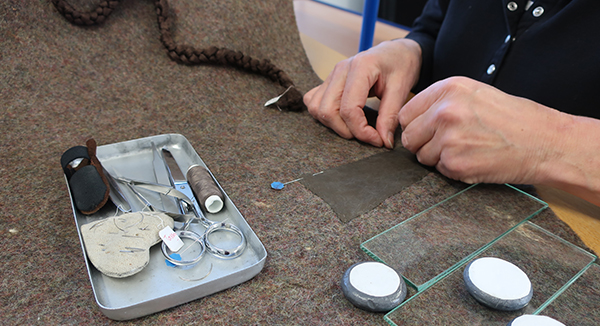
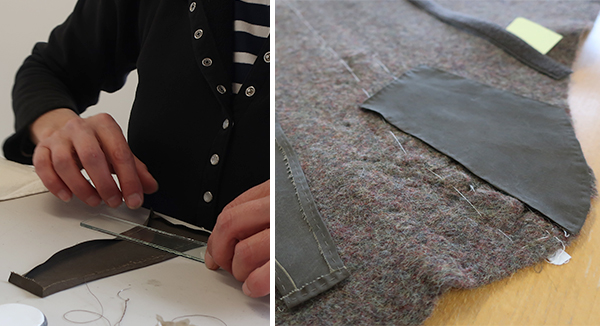
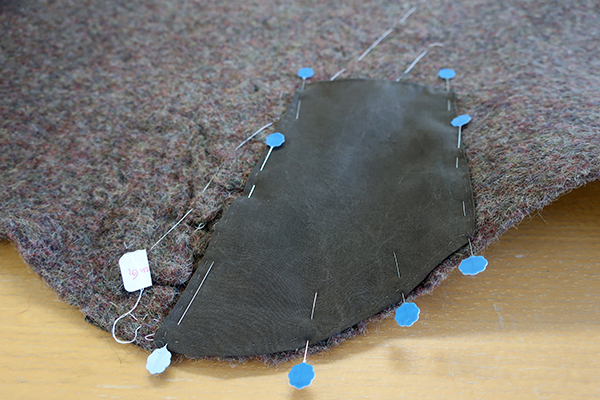
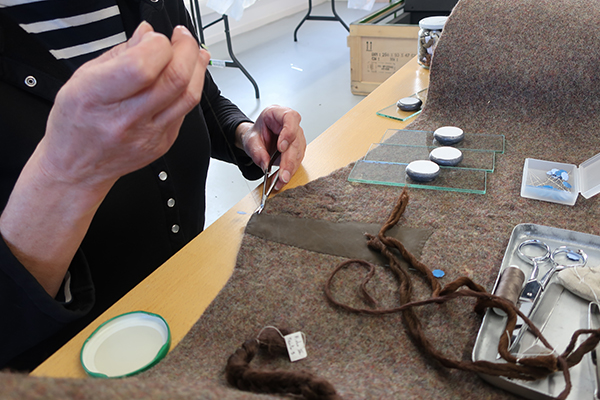
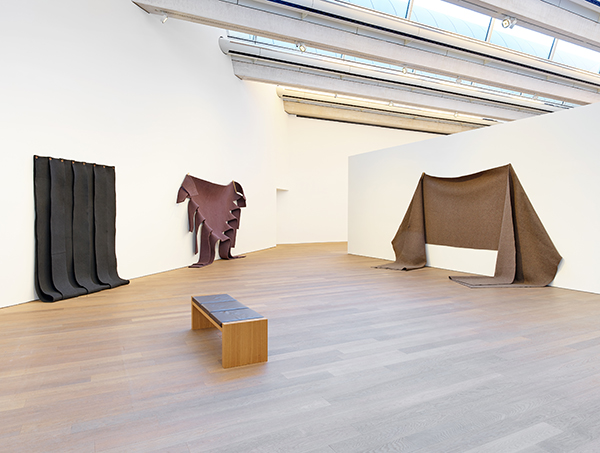
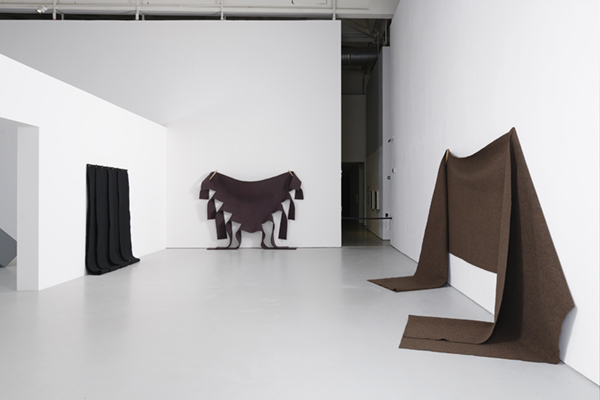
Nombre de commentaires